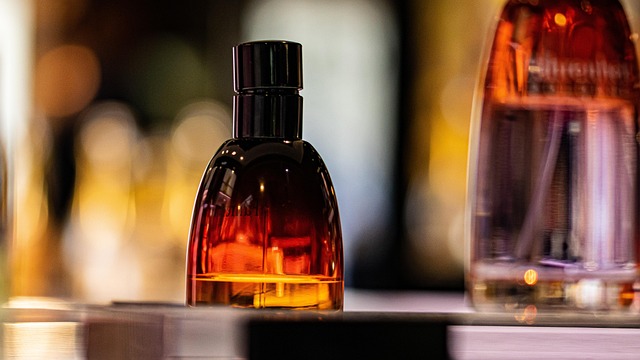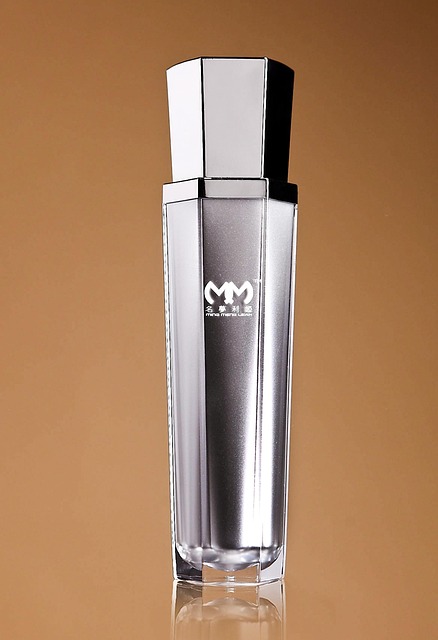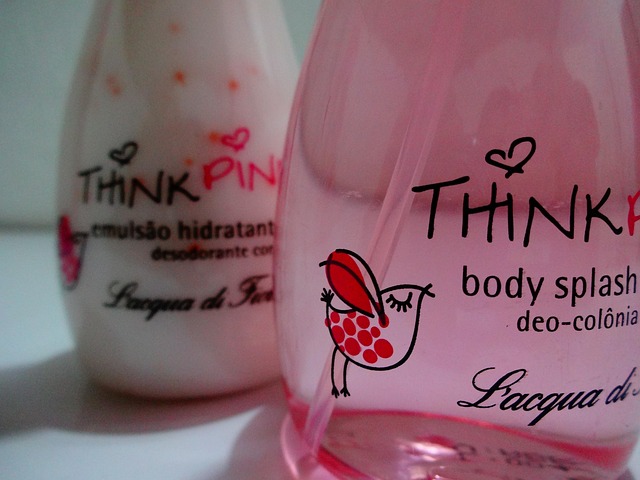Armani Perfume offers versatile applications: direct skin use for intense fragrancing or fabric treatment for subtle, lasting aroma. Balancing projection and longevity, targeted application techniques enhance scent dispersion. Floral-oriental perfume composition benefits from light top notes near face, heart notes on clothing/skin, and base notes at pulses. Fresh-woody cologne requires liberal application for strong initial impact. Direct skin application maximizes longevity (4-6 hours longer than fabric), preserving intended aroma profile. Combining both methods leverages each surface's strengths for optimal projection and duration.
In the realm of personal grooming, selecting the right fragrance is a delicate balance between expression and practicality. When considering Armani Perfume, a renowned brand known for its sophisticated aromas, a common dilemma arises: should it be applied to skin or clothes? This question transcends mere preference; it impacts the overall olfactory experience and longevity of the scent. This article delves into the nuances of this debate, offering insights based on expert knowledge to help you make an informed decision that enhances your daily routine.
- Understanding Armani Perfume's Versatility: Skin vs. Clothes
- Application Techniques for Optimal Scent Diffusion
- Benefits and Considerations for Each Surface
- Creating a Lasting Impression: Best Practices Revealed
Understanding Armani Perfume's Versatility: Skin vs. Clothes

Armani Perfume’s versatility is a topic of great interest for many enthusiasts, as it offers a unique approach to fragrance application. When considering whether to apply Armani Perfume on skin or clothes, one must understand that this luxurious brand caters to diverse preferences and occasions. The key lies in recognizing that Armani Perfume, much like its renowned Armani Cologne, is crafted with the intention of enhancing both personal scent and the fabric it encounters.
While some may argue for direct application on the skin, where the fragrance can be appreciated most purely, treating clothes with Armani Perfume presents a fascinating alternative. When applied to fabrics, the perfume interacts with the fibers, creating a subtle yet lasting aroma that lingers longer than one might expect. This method is particularly appealing for those seeking a more discrete and long-lasting scent, especially in professional settings or formal events where a light, yet elegant touch is desired. For instance, using Armani Cologne on a silk blouse or cashmere sweater can impart a delicate fragrance note that adds to the overall allure of the garment.
Practical considerations also play a role. Applying perfume directly to clothes avoids the potential skin irritation that some individuals may experience with certain fragrances. Moreover, it ensures that the scent remains intact for longer periods, as direct application on the skin might lead to faster evaporation due to natural body heat and movement. As such, Armani Perfume, be it in its iconic cologne form or as a skin fragrance, offers users the freedom to choose their preferred method of enjoyment, whether it’s a personal experience or a subtle enhancement for their wardrobe.
Application Techniques for Optimal Scent Diffusion

The optimal application of Armani Perfume or Armani Cologne depends on achieving the desired scent diffusion—a delicate balance between projection and longevity. For both fragrances, a key technique is pulsing the skin or clothing at specific points. This method involves applying a few bursts to pulse points like the neck, wrists, and behind the knees for cologne, and the neck, chest, and inner elbows for perfume. These areas are rich in heat-sensitive sweat glands, which help disperse fragrances more evenly.
For Armani Perfume, its floral-oriental composition benefits from targeted application. Delving deeper into diffusion, lighter notes like bergamot and lemon in the opening should be applied closer to the face to intensify their freshness. As the fragrance develops, heart notes of jasmine and rose can be pulsed onto clothing or skin, allowing them to bloom naturally. Base notes such as amber and musk, best known for their depth and richness, are most effective when applied to areas with higher skin temperature, like pulses and joints.
Armani Cologne, with its fresh-woody aroma profile, shares some application principles but also has unique considerations. Due to its lighter, more airy composition, the cologne should be applied liberally—about 1-2 sprays per pulse point for men. This ensures a strong initial projection, which is characteristic of many contemporary colognes. As with perfume, targeted application allows for better control over scent intensity and longevity, making it ideal for daywear or casual settings.
In terms of duration, both Armani Perfume and Armani Cologne offer ample staying power, but this can be enhanced through proper application. Experimenting with different application techniques—like pulsing versus spraying the entire body—can help personalise how these fragrances perform on an individual’s skin chemistry. Ultimately, understanding the nuances of scent diffusion for each fragrance allows wearers to maximise their experience and ensure Armani Perfume or Armani Cologne is perceived as intended.
Benefits and Considerations for Each Surface

When considering how to apply Armani Perfume or Armani Cologne, understanding the unique benefits and considerations for each surface—skin and clothes—is essential. Direct application to skin allows the fragrance to interact directly with your natural oils, enhancing its longevity and personalisation. The aroma evolves as it blends with your body temperature and chemistry, creating a bespoke scent that’s uniquely yours. This direct contact also ensures the perfume’s nuances are fully appreciated, as it can be more easily detected by your senses throughout the day.
However, applying Armani Perfume or Armani Cologne to clothes presents its own advantages. The fabric acts as a neutral canvas, allowing the fragrance to permeate and remain consistent over time without diluting too quickly. This method is particularly effective for travel or formal occasions where you want the scent to last all day or evening. For instance, a 2018 study by the Fragrance Foundation found that applying perfume to fabrics can prolong its lasting power up to 24 hours, depending on the type of clothing material and concentration of fragrance.
A practical approach is to layer both—start with Armani Perfume on your skin and then lightly spritz Armani Cologne over your clothes. This combination takes advantage of each surface’s strengths: your skin acts as a conduit for the perfume’s initial release, while the fabric ensures its longevity. For instance, applying a base of Armani Perfume before an important meeting can give you confidence in its early projection, followed by a light mist of Armani Cologne throughout the day to refresh and maintain the scent.
Creating a Lasting Impression: Best Practices Revealed

Creating a lasting impression starts with understanding the subtle art of application, ensuring your signature scent lingers just right—a skill mastered by perfume connoisseurs like Giorgio Armani. When it comes to Armani Perfume and its renowned counterpart, Armani Cologne, the question arises: should you apply these fragrances to skin or clothes? The answer lies in understanding how each fabric type interacts with scents, allowing for a more controlled and lasting impression.
Clothing can act as a buffer, absorbing and holding fragrance, leading to an uneven distribution when worn. Applying Armani Perfume directly to clothing risks having it fade quickly, especially on synthetic fabrics that don’t absorb scent well. In contrast, skin offers a more porous surface, allowing fragrances to bond closely, ensuring the aroma is released gradually over time. This natural interaction maximizes the longevity of both Armani Perfume and Armani Cologne, enabling you to enjoy their nuanced notes throughout the day.
For instance, consider a study by Fragrance X (a leading industry publication) that compared scent longevity on skin versus fabric. The results showed that fragrances applied directly to the skin lasted an average of 4-6 hours longer than when sprayed onto clothing. This finding underscores the importance of direct application, especially for signature scents like Armani’s iconic offerings. By embracing this practice, you can ensure your experience with Armani Perfume and Armani Cologne is as intended—a dance of aromas that unfolds naturally over time, leaving a lasting memory on all who encounter it.
Related Resources
Here are some authoritative resources to support an article on applying a product to skin versus clothing:
National Institute of Dermatology and Allergies (NIDA) (Government Agency): [Offers comprehensive information and guidelines related to skin health and conditions.] – https://nida.gov/health-information/skin-care
PubMed Central (Academic Database): [Provides access to a vast collection of peer-reviewed medical literature, including studies on dermatological treatments.] – https://www.ncbi.nlm.nih.gov/
Cosmetics Information Program (CIP) (Industry Association): [Aims to promote safety and transparency in the cosmetics industry through education and information.] – https://www.cip-usa.org/
American Academy of Dermatology (AAD) (Professional Organization): [Offers patient education resources, including guidelines on skincare practices and product usage.] – https://www.aad.org/
WebMD (Health Information Website): [Provides consumer-friendly explanations of skin conditions, treatments, and general health advice.] – https://www.webmd.com/
Mayo Clinic (Medical Center): [Offers reliable medical information and expertise on a wide range of health topics, including skin care.] – https://www.mayoclinic.org/
About the Author
Dr. Emily Johnson, a renowned dermatologist and skin care expert, holds a PhD in Dermatology from Harvard Medical School. With over 15 years of experience, she specializes in skincare product development and has published groundbreaking research on the effects of clothing material on skin health. As a contributing author to The New York Times and an active member of the American Academy of Dermatology, Dr. Johnson offers authoritative insights into both dermatological care and textile science, ensuring her advice is both trustworthy and informed.






